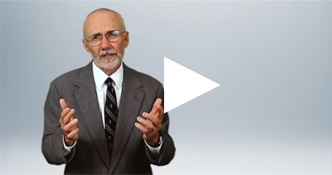How to Build Volunteer Commitment to a Fundraising Campaign
by William J. Moran, J.D., M.S.Ed.
A campaign is a group process that requires serious commitment from the collective consciousness of the organization. The board and other key decision-making bodies of the organization need to “process” the need for the campaign and “buy in” to it. This process of getting people on board takes time and patience. You can expect an approval period of several months, depending upon your organization’s culture. It is important that this approval process be allowed to run its course so that key leadership has ample opportunity to review the merits of the campaign and agree to support it.
Obtain Board Ownership
Following are four steps to help obtain board ownership:
- Meet individually with key members of the board of directors to introduce them to the campaign and seek their approval. It may take several one-on-one meetings before they understand fully the campaign and appreciate its importance for your organization.
- Go through the board committee process. Make the campaign a primary agenda item for key committees to fully discuss and approve. The committee process is important in that it provides time to answer questions and raise doubts for which there is no opportunity at full board meetings. This is where individual board members have the opportunity to get their questions answered and get individual “buy in” to the campaign.
- Have the board approve a feasibility study for a possible campaign. The advantage of this action is that it does not require a final commitment by the board. They can commit to a “half way” step (the feasibility study) with the assurance that a final decision on the campaign will come later. This allows them to partially commit with the opportunity to back out if the study reveals a lack of support for the campaign.
- Have key board members participate in a “planning committee” to review the vision for the campaign and oversee formulating the case statement. There is nothing like allowing key board members to sit in on early decisions to build ownership for the campaign.
You will not get unanimous approval for the campaign and do not expect it. There will always be “doubters.” In fact, expect to meet with some resistance during each step in this process. Remember, activity and change foster resistance. Therefore, it is necessary to patiently educate and persist in obtaining approval at each stage. You can expect less resistance if key decision-makers, such as the board chair, are given ownership early in the approval process. On the other hand, if you immediately take this idea to your board without laying any groundwork with the board chair or other leadership, expect strong resistance. Many concerns will be raised throughout the process. When doubts are voiced, look beyond their doubts for their real concerns. These concerns may include:
- Fears about the level at which that they will be asked to contribute financially
- Concern about the level of volunteer involvement that will be required
- Will they be required to go out and solicit gifts?
- Other ways in which they feel threatened by the campaign
Who are the key decision makers on your board that you need as allies in the approval process?
Other Important Groups
Often there are groups, in addition to the board, who are key “players” in your organization. These might include administration, auxiliaries, alumni groups, etc.
You will have a smoother campaign if key decision makers from these groups are also brought on board early in the approval process.
Volunteer Involvement in the Campaign Itself
Once the campaign begins, continued volunteer involvement is critical. You will find that each volunteer has strengths to offer the campaign process. In addition, most fundraisers know that “involvement leads to financial commitment.” If you want a major gift from a prospect, then invite him or her to participate in volunteer activities.
The best tool to insure this participation is to set up a strong campaign committee structure. Frankly, as long as the committee meetings make good use of the volunteer time, the more the better. It is important, however, to have strong meetings. Let the volunteers help with key policy decisions. Following are but a few of the ways in which volunteers may benefit your campaign: they can help identify prospects, they will come up with good ideas on how to cultivate prospects, many volunteers will be willing to “open doors” for a solicitation, and some will be willing to go out and solicit themselves.
Ask yourself these questions:
- What groups (in addition to the board) should have ownership in the campaign (e.g., auxiliaries, alumni groups, administration, faculty)?
- Who are the key decision makers in these groups (outside of board) who should be “brought on” early in the approval process?
Bill Moran, The Moran Company, specializes in nonprofit executive searches
for executive directors, fundraising staff and other top nonprofit leadership.
www.morancompany.com
© 2009 Moran Company
“We find great nonprofit executives”
Posted in Fundraising Articles
Subscribe
Join more than 10,000 nonprofit professionals, community leaders and board members who receive e-mail updates from The Moran Company.






